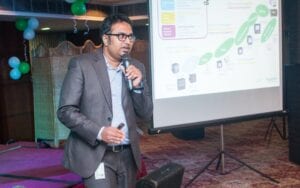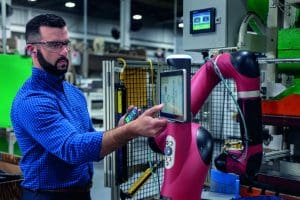The world’s largest soluble coffee factory, a Nestlé Nescafé plant located in Toluca, Mexico, was looking to eliminate unplanned stoppages and better understand its production efficiency. The factory operates 24 hours a day, year-round, and any stoppage impacts the reliability of production processes. Such interruptions also can affect the quality of the product that makes its way to grocery store shelves. When eight unplanned stoppages in one year caused production to falter, plant stakeholders knew they had to revamp their approach to ensure higher electrical systems resilience and reliability. Nestlé Nescafé chose to partner with Schneider Electric and embark on a transition to a condition-based maintenance approach to address the issue. That meant equipping electrical panels, transformers, and switchgear with sensors and connecting to a cloud-based platform that allows the plant floor power assets to be visible and remotely managed 24/7 from any device.

Nestlé Nescafé decided to conduct a pilot to compare uptime differences between connected and non-connected assets to test the proof of concept. As part of their migration to move to a condition-based maintenance approach, Schneider Electric’s EcoStruxure digital platform was implemented, as part of EcoCare membership, to monitor specific areas of the factory during the pilot. Three transformers were fitted with Easergy TH110 wireless temperature sensors, allowing them to communicate with the platform.
A disruption that occurred in April of 2020 moved the project from pilot to full implementation. A short circuit inside an unmonitored section of the main substation resulted in a 14-hour shutdown, costing Nestlé approximately $588,000. Because this section wasn’t connected, engineers weren’t alerted that equipment was at risk. This incident catalyzed Nestlé’s decision to subscribe for EcoCare, the next service plan generation, throughout its Nescafé plant. Nestlé’s investment has already paid off as five major incidents have been avoided between 2020 and 2024, allowing an estimated saving of $2M.
Condition-based maintenance drives higher uptime and lowers costs
Nestlé Nescafé’s migration to a condition-based maintenance approach reflects a trend that is rapidly gaining momentum across all industries. Organizations are enriching their traditional calendar-based preventative maintenance plans with more digitized condition-based maintenance implementations. Schneider Electric’s EcoCare membership, for example, offers organizations that are digitizing their maintenance approach the following benefits:
- Cost savings & sustainability – Instead of shutting down to perform electrical asset maintenance every three years (the norm), the condition-based maintenance approach can help extend manufacturer maintenance from 3 to up to 5 years. A maintenance index is computed based on data collection and cloud analytics, which validate whether the risk of electrical equipment failure is high or low. The risk level, rather than the calendar, drives the maintenance decisions. Since end-users disrupt their business less frequently, labor and management costs are reduced. This results in an estimated cost savings of 30-40% compared to standard maintenance approaches. In addition, since the life of the electrical assets can be extended by up to 25%, the condition-based maintenance approach also offers a more sustainable solution.
- Improved uptime – The risk of breakdown is lower when using software analytics, artificial intelligence, and leveraging a remote experts team”. Because the electrical equipment is monitored on an ongoing basis, Connected Services Hub experts detect any anomalies in the sensor data. In this way, potential issues are identified much earlier and can be addressed before the situation results in unanticipated downtime. Risks are reduced up to 75% because of a detailed analysis drawn from a large data lake of performance statistics on similar electrical equipment from across the globe.
- Deployment flexibility – To assure the most effective cost and uptime protection trade-off, electrical assets are evaluated based on criticality to the operation and state of health. Less critical equipment can continue to be serviced via traditional preventive maintenance schedules. For the more critical electrical assets, however, qualified services engineers can remotely connect via the cloud and monitor the health of the equipment. When combining the EcoStruxure Service Plan with the power of the EcoStruxure Asset Advisor platform and access to remote consultants, maintenance coverage can be customized to adapt to the particular needs of each plant for both on-site and remote dynamic maintenance.
For more information
End users who decide to deploy the Schneider Electric condition-based maintenance approach are provided remote access to a web user interface. This enables a real-time view into reports and performance dashboards that share the electrical assets’ performance details. In this way, end users are provided with insights into the current conditions of connected MV and LV equipment, 10-40kVA Three-Phase UPSs, and Variable Speed Drives at the site. This enables technicians to perform the right maintenance at the right time for all their critical assets.
To learn more about the EcoStruxure Service Plan and how condition-based maintenance can lower costs and increase uptime in your plant, download the Nestlé Nescafé case study or visit our web page.



